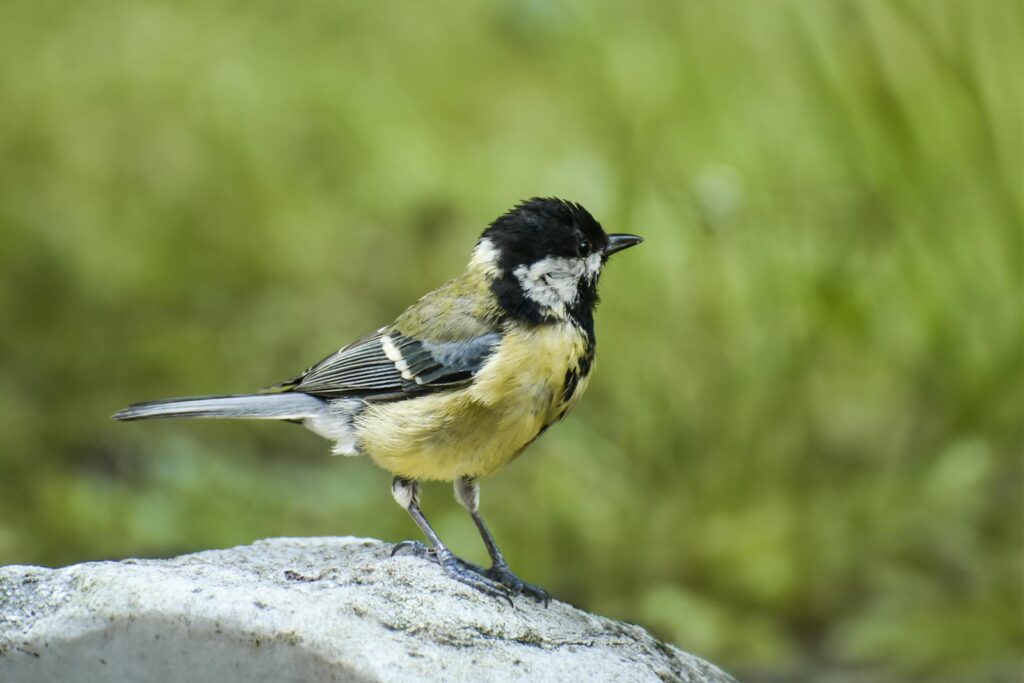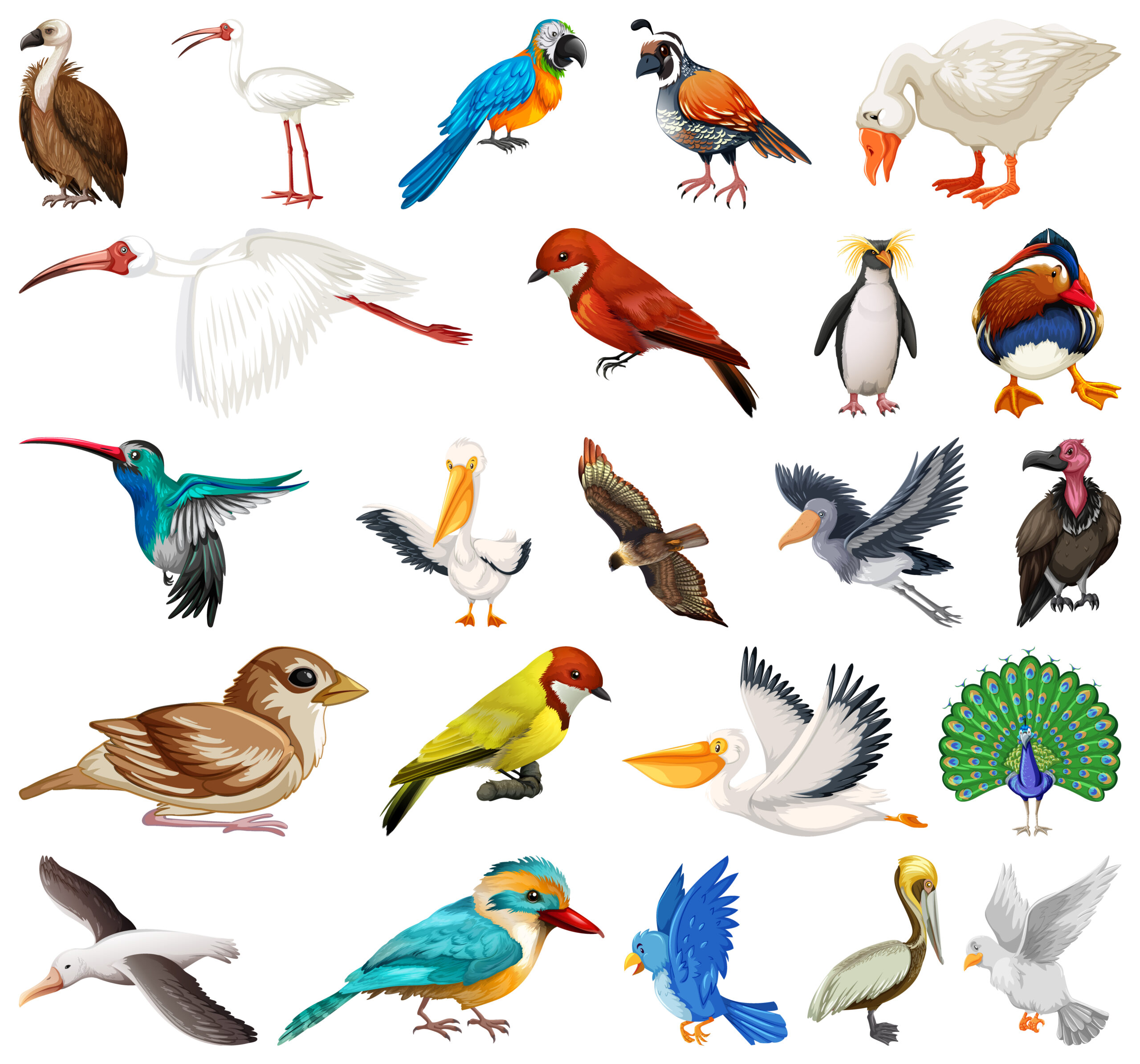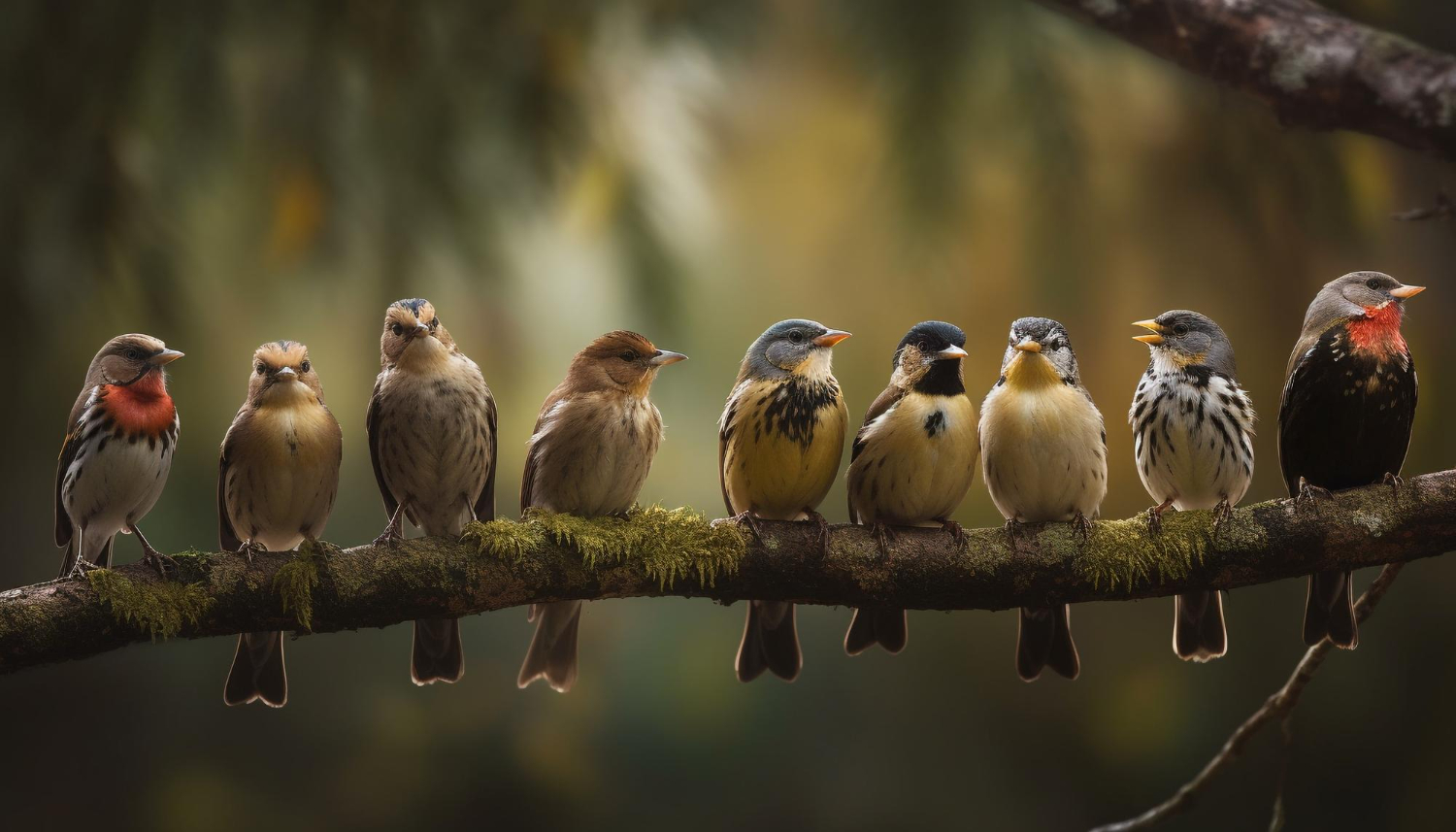From broadleaf forests in the north to tropical mangroves in the south, North America’s skies host one of nature’s greatest spectacles: the continent’s major bird migration patterns. Each year billions of birds trace invisible highways above us, linking breeding grounds and wintering areas in an intricate web of flight paths. These flyways—from the Atlantic coast across interior rivers and plains to the Pacific shore—form a kind of living map, but one alive with surprises.
Imagine Red Knots lighting down en masse on a New Jersey beach or a tiny warbler braving a nonstop Atlantic crossing; these are just a few of the amazing stories behind the major bird migration patterns we’ll explore. In this article, we’ll journey through each of North America’s great flyways, meet the warblers, sandpipers, raptors and other travelers along the way, and discover the challenges they face and the efforts underway to chart and protect their epic flights.
Table of Contents
Atlantic Flyway: A Key Strand in North America’s Major Bird Migration Patterns

The Atlantic Flyway follows the entire East Coast of the continent, making it a major bird migration patterns highway from Florida up to Greenland. Coastal wetlands, marshes and mudflats burst into life each season as shorebirds and waterfowl stop to rest and feed. In spring, thousands of bright-orange Red Knots converge on Delaware Bay, gorging on horseshoe crab eggs to fuel their journey north. Meanwhile forested islands and parklands host songbirds passing through; for example the Cerulean Warbler and wood thrush thread through Appalachian forests on their way from Central America to boreal woods.
Even urban oases can spring surprises – Central Park in New York City or Cape May on New Jersey’s tip become buzzing bird watch posts in migration season. These winding coastal and inland routes show how diverse the major bird migration patterns of the Atlantic Flyway can be, with some species even straying out over open ocean before rejoining the flyway farther north.
Mississippi Flyway: A River Highway in Major Bird Migration Patterns

Flowing up from the Gulf of Mexico, the Mississippi Flyway acts like a watery highway that many of North America’s migrants follow. It tracks the great rivers – Mississippi, Missouri, Ohio – as they carve inland, and it also sweeps through the Upper Midwest and Great Lakes. This flyway funnels billions of ducks, geese, swans, and other waterbirds north each spring; a vast migrant flock might include Canvasback ducks and white pelicans riding air currents above the river valleys. Forested riverbanks host colorful woodland migrants too.
For instance, the swamp-loving Prothonotary Warbler and yellow-billed cuckoo weave through the bottomlands before continuing north. Birders on this route look skyward at hawks and eagles, but they also peer into marshes for rails and shorebirds. With its mosaic of rivers and lakes, the Mississippi Flyway is an indispensable part of North America’s major bird migration patterns, connecting tropical winter homes in Central and South America to breeding grounds across Canada.
Central Flyway: Heartland Crossroads in Major Bird Migration Patterns

The Central Flyway cuts straight up the heart of the continent, running from Texas and the Gulf of Mexico through the Great Plains to the Canadian Prairies. This open expanse is a crucial component of our major bird migration patterns. More than half of North America’s migrating waterfowl choose this route, thanks to the “prairie pothole” lakes and rivers that serve as resting spots. In spring these skies ring with the bugling calls of Sandhill Cranes. The famous Nebraska Platte River stopover fills with tens of thousands of cranes every year – a breathtaking reminder of the flyway’s scale.
(The close-up above shows one of these long-legged cranes during migration.) After fueling up on grains in the river’s floodplain, the birds fan out to Alaska, Canada and Siberia. Other migrants also sweep through. Waterbirds like Snowy Plovers dot the coast, and prairie species like yellow-breasted chats and bobolinks ride the central currents northward. Together, they form an astonishing bundle of life on this interior flyway, demonstrating how many of our major bird migration patterns converge in the heartland.
Pacific Flyway: Western Skies on Major Bird Migration Patterns

On the western edge of the continent, the Pacific Flyway runs from Mexico’s shores all the way to Alaska’s Aleutian Islands. It is another thread in the tapestry of major bird migration patterns. Coastal mountains and valleys guide migrants north, and some head as far south as Patagonia in winter. Tiny Rufous Hummingbirds are among the marathoners here: they fly about 3,000 miles from their wintering grounds in Mexico to summer in British Columbia. Western Tanagers and Townsend’s Warblers pepper the California forests and Pacific Northwest with flashes of color; one of the brightest, a Western Tanager, is pictured above.
Massive inland lakes like Utah’s Great Salt Lake and lakes in the Central Valley become magnet stops; there, thousands of Black-necked Stilts, sandpipers and other shorebirds congregate each spring. The Pacific Flyway’s route along mountains and coastlines shows yet another facet of our major bird migration patterns: it’s the western portal through which the continent’s colorful and diverse flocks make their journeys.
Songbird Voyages: Tiny Journeys in Major Bird Migration Patterns

Songbirds and warblers sketch some of the most intricate lines on our migration map. These little travelers ride the major bird migration patterns despite their size. Each spring, warblers like the Blackpoll Warbler depart the Alaskan and Canadian forests and head east. Then, astonishingly, they launch themselves in a nonstop oceanic sprint of over 2,500 miles from the northeastern U.S. to South America – often flying for 60–72 hours without landing. Other thrushes and warblers split their way north. Swainson’s Thrushes, for example, take coastal routes on one side of the Rockies and central routes on the other, revealing hidden flyway loops.
Even the tiny Ruby-throated Hummingbird participates: many cross the Gulf of Mexico in a single flight, while others take a longer arc via Florida. These small birds are guided by starlight and magnetic maps, and their timing is finely tuned. Recent studies show some, like the American Redstart, are migrating earlier in spring than ever before, likely in response to warming climates. In all these ways, North America’s songbirds weave their own epic chapters of the major bird migration patterns, proving that size is no barrier to adventure.
Shorebird Superhighways: Majestic Loops in Major Bird Migration Patterns

Along beaches and wetlands, shorebirds trace some of the most dramatic loops of the major bird migration patterns. Every spring Delaware Bay witnesses one of nature’s great feasts: reddish Red Knot sandpipers descend by the thousands to feast on spawning horseshoe crab eggs. Fat with fuel, they then lift north to Arctic nesting grounds, a marathon journey of ice and sky. Other sandpipers, plovers, and godwits travel in long lines along both coasts. In the east, Sanderlings and Dunlins swing up from South America; in the west, Black-bellied Plovers and Black-necked Stilts stage at the Salton Sea or Great Salt Lake.
Even unexpected detours occur: researchers have documented Ruddy Turnstones flying south along one coast in fall and then choosing the entirely different inland route on return north. These migratory shorebird highways remind us that the map of migration is full of loops and spirals – the major bird migration patterns for these shorebirds form majestic circuits between hemispheres.
Raptor Migrations: Apex Flyers in Major Bird Migration Patterns

Raptors – hawks, falcons, eagles and the like – are among the sky’s most powerful travelers, carving predictable paths as they exploit soaring winds. Their flight lines also form a key branch of the major bird migration patterns. Every autumn, for example, thousands of Broad-winged Hawks and Sharp-shinned Hawks funnel into migration watch sites. Some unexpected twists have emerged from recent studies: a group of Broad-winged Hawks was found veering east toward the Great Lakes instead of heading directly south, presumably to catch strong thermal updrafts there before continuing their trip.
Peregrine Falcons have taken a different approach: many urban Peregrines now skip migration entirely, nesting on skyscrapers and hunting city pigeons year-round. Owls join the show too. Snowy Owls, typically Arctic residents, sporadically irrupt south in “winter invasions” (sometimes reaching states like Texas or Florida) when their northern prey crashes. Each fall and spring, raptor-watchers on mountain ridges and sea cliffs can see these concentrated flights overhead – a poignant reminder that even apex predators follow the sky’s highways in search of food and breeding grounds. The migration of these birds of prey adds majesty and power to North America’s major bird migration patterns.
Unusual Behaviors in Major Bird Migration Patterns

Migration also has its rebels and record-breakers. Not every bird follows the textbook route. Some species have recently amazed scientists by taking surprising detours or shifting their maps of movement. American Redstarts, for instance, are now migrating up to two weeks earlier in spring than they did a generation ago. Painted Buntings once flew straight to Central America, but recent tracking shows many swinging far west through Texas on the way. The tiny Golden-winged Warbler, whose migration was once a mystery, has been found heading from the Great Lakes all the way to Colombia – sometimes looping through Florida – a path no one expected.
Some shorebirds and marsh birds even migrate in different directions in different years, depending on weather. At the extreme, a few have stopped migrating: urban Cackling Geese or certain Peregrines in cities simply settle down instead of flying south. These oddities underline how dynamic migration is. The major bird migration patterns of North America include these unexpected moves – from longer flights over open water to new city-dwelling strategies – reminding us that evolution and environment are constantly re-drawing the map.
Perils and Obstacles in Major Bird Migration Patterns

Long-distance journeys are not without dangers. Along every major bird migration pattern, migrants face hurdles big and small. Window panes on tall buildings are a notorious trap for migrating songbirds on nocturnal flights, leading to millions of fatalities each year. Artificial lights confuse travelers, luring them off course. On the ground, outdoor cats take a heavy toll on exhausted migrants at stopover sites. Habitat loss is perhaps the gravest threat: wetlands drained for development, fields converted to cropland, and forests cleared along flyways mean fewer places for birds to rest and feed.
Climate change adds uncertainty, as insects and seeds may not be in sync with arrival times, and storms can blow entire flocks into unfamiliar territory. Even wind turbines and communication towers can pose collision risks if not sited carefully. All of these factors make each of the major bird migration patterns perilous highways. Still, awareness is growing: many communities now plan lights-out events and create bird-friendly spaces to give these travelers a safer journey.
Mapping the Journey: Tracking Major Bird Migration Patterns

Modern technology has turned these ancient flyways into open maps. Scientists now overlay data to reveal the major bird migration patterns in real time. Weather radar systems pulse with infrared flashes that show massive waves of migration pulsing at night. Citizen scientists contribute too: birders logging millions of sightings into apps like eBird create live maps of who’s flying where and when. Tiny tracking devices and geolocators have uncovered astonishing facts: one study found Blackpoll Warblers flying almost 2,800 miles nonstop over the Atlantic in a single autumn voyage.
The image above illustrates how waterfowl counts and GPS data outline the four classic flyways. Projects like Motus (a radio tag network) and efforts by national parks are charting even more details of each bird’s route. Together, these tools have turned our curiosity into knowledge, helping everyone see the migration map clearly and understand exactly how each species fits into the larger major bird migration patterns.
Conservation Efforts for Major Bird Migration Patterns

As we learn more, bird lovers and scientists are taking action to protect these routes. Along every flyway, dedicated refuges and parks—such as Cape May Point, Bosque del Apache, and Malheur—serve as rest stops for migrating flocks. “Lights Out” campaigns in cities help nocturnal migrants avoid dangerous beams, while window decals and designs shield birds from collisions. Conservationists create and restore wetlands, forests and grasslands along flight paths so more birds find fuel and shelter. Volunteers band birds, count hawks, and record spring peak dates, contributing data that guide policy.
Treaties like the Migratory Bird Treaty unite countries across flyways to protect species year-round. Even backyard actions help: providing clean water or planting native shrubs can sustain a warbler on its journey. Every effort adds a safety net to the migration highways. By monitoring and supporting North America’s major bird migration patterns, people from hobbyists to policymakers are weaving hope into the map, ensuring these epic aerial voyages continue far into the future.
Watching a flock rise or hearing a dawn chorus of returning songbirds, we see evidence of these invisible routes. Understanding the essential and surprising map of major bird migration patterns gives us wonder and purpose. It connects us to the rhythm of the seasons, and it reminds us that our actions matter. As you gaze skyward next migration season, remember: each silhouette or song is part of an age-old story mapped across continents. With knowledge and care, we can help these feathered travelers write the next chapter safely.




gpkrmh